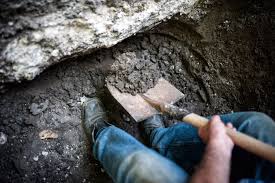Imagine yourself enjoying a flat white at one of the hippest cafes in underpinning near me when you realize that the floor is uneven beneath your feet. You might brush it aside, but that raises a warning flag for building specialists. Underpinning is more than just a fancy word used by engineers; it is essentially the backbone of keeping our busy city’s structures secure.

What then is at the core of it all? Think of your home as a long-time friend who has supported you through good and bad. But over time, they’ve begun to show some actual and metaphorical flaws. Giving a friend a sturdy pair of crutches to help them stand tall again is similar to providing underpinning. It is the procedure of fortifying the base of an already-existing building or other structure.
Why is this so necessary for Melbourne? As unpredictable as the weather in Melbourne can be our soil here. It shifts like quicksand one moment and is rock solid the next. These shifts in the ground can cause buildings to settle unevenly, which might result in structural problems that would make any homeowner nervous.
There’s more than one way to skin this cat, so let’s talk techniques. In order to establish a new support system, traditional underpinning entails excavating beneath the current foundation and adding concrete. Consider it as a way to give your house some new, well-cushioned shoes. Additionally, modern screw pilings reinforce structures from below by screwing steel piles into the ground.
Have you ever heard someone claim to be “as strong as an ox”? Our goal with underpinning is to guarantee that your building will endure everything Mother Nature throws at it. However, getting there isn’t always easy. It involves deft hands and astute minds cooperating like a well-oiled machine.
When your walls or floors begin to show cracks, you might be wondering if you can just put on some duct tape and call it a day. Warning: that is not going to work! Fast remedies can cause more problems in the future because they don’t address the underlying issue and are akin to painting lipstick on a pig.
There are plenty of older, quirky residences with charm in Melbourne. Consider the Victorian-style cottage owned by Mrs. Jenkins on my block. It was last summer when she realized her doors were sticking more than normal. It didn’t take long to find that her foundations had moved as a result of variations in the moisture content of the soil (thanks once more to our erratic weather!). Her gorgeous home was back in tip-top shape in no time thanks to skilled underpinning work done by knowledgeable local specialists.
However, let’s not deceive ourselves—underpinning isn’t something you choose at brunch at St Kilda Beach after perusing a Better Homes & Gardens issue. It’s a significant matter that calls for in-depth evaluations by experts who are familiar with every detail of the situation, from soil conditions to structural integrity issues.
Yes, it does come at a price! However, consider this: would you rather spend now or pay twice as much when those tiny fissures become enormous chasms? Prevention is always preferable than cure, much like when deciding between getting regular dental checkups and eventually needing root canal therapy!
To sum up without really summarizing anything (there are no conclusions here! ), keep in mind that underpinning is crucial to maintaining Melbourne’s buildings secure in the face of the many environmental issues we deal with on a daily basis, from shifting soil due to weather patterns to wear and tear from decades of use.
The next time you’re sipping your coffee or taking in the stunning historic mansions that line our streets, remember the unsung hero known as underpinning who works tirelessly to keep things together in spite of all the odds!

